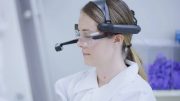Telemedicine and digital twins have already brought a great deal of innovation to the healthcare sector. The ability to leverage new immersive solutions will open the door to a wide range of possibilities, and the healthcare industry has already started tapping into these exciting cutting-edge technologies. For instance, healthcare providers use 3D images of the human body to better facilitate diagnoses and treatments, whilst first responders can conduct exercises in simulated environments to prepare themselves to manage real-time triage and containment challenges. The list of potential use cases is nearly infinite, as is the opportunity ahead.
Innovation today
Telemedicine, particularly through the use of digital twins and improved immersive experiences, can help patients expand the range and number of hospitals and doctors they can consult. This in turn alleviates pressure on local healthcare organizations and empowers individuals to have greater control over their healthcare.
Additionally, digital twins of patients used to visualize and run models in the metaverse can enable doctors to test intervention options, predict recovery trajectory, and identify possible reactions to medication. Using metaverse environments as training vehicles for practitioners enables them to enhance their own anatomical knowledge, as well as deepen their understanding of the human body. Imagine being able to go inside a model of a working human heart – watching exactly how it pumps and visualizing the flow and electrical signals triggering the beat; seeing examples of unhealthy arteries or plaque build-up; watching how the blood passes through the lungs to be oxygenated and through the capillaries to deliver; oxygen and nutrients. This type of visualization holds immense potential for not just the evolution of the medical field, but for medical education as well.
Providing better training ground
The ability to simulate the human body with any condition through the use of visualization technology will greatly improve the training of surgeons, pathologists and osteopaths, among medical professionals. With this, surgeons could practice on virtual patients before committing to the actual surgery. The virtual reality (VR) experience of a metaverse environment can also enable doctors to have a more detailed look at a patient’s pathology or radiology images through high-resolution 3D modelling.
For therapy sessions, metaverse solutions could enable practitioners to create a patient-focused experience, tapping into new tools for treatments such as cognitive behavioural therapy. Physical therapy can be transformed by using haptic sensors to create rehabilitation programmes that help patients cope with symptoms in diseases such as Parkinson’s.
An additional possibility is the creation of virtual “war rooms”– 3D virtual locations where documents and artefacts are readily available and conversations persist to be used to accelerate collaboration among caregivers–whose avatars can meet in real time as needed.
Enhancing patient experience
Another significant benefit of tapping into the potential of metaverses is enhancing the patient experience. Metaverse-based solutions can enable more immersive remote visits to doctors. While video-based doctor visits have become ubiquitous, it is still only a flat-screen experience. As we enhance remote interaction capabilities, patients will have fewer reasons to travel to see an expert in a certain field. In turn, collaborative spaces for doctors will enable consultation among multiple medical professionals with ease, facilitating consensus diagnosis, as patients won’t be required to rely on the expertise of a single practitioner.
Patient experience will be further enhanced by the use of IoT-connected devices. Portable healthcare devices such as heart rate and blood pressure monitors and oximeters can sync with the Internet and share that data with doctors inside a metaverse app. Wireless technology could also facilitate biometric and environment data being fed back into a real-time digital model of the patient and represent overlays of medical history and familial history in a single place.
Overcoming obstacles for the future of healthcare
While metaverse-based solutions can revolutionize healthcare, we have to address the risks along the way. Introducing an increasing amount of data from records and connected devices into these virtual spaces can elevate risks that need to be addressed before progress can be made. For example, as free-to-use metaverse platforms rely on algorithms to profile users for advertising purposes, concerns arise about privacy, security and compliance.
In time, we will understand how transparent metaverse platforms will be when disclosing how much data they collect and how much control users will have over that data. While it is inspiring to see so much interest in the possibilities of the metaverse, healthcare organizations will also need to consider how they can guarantee safety and privacy in their virtual ventures. To fully benefit from the advantages presented by this technology, organizations must be proactive about their strategies for data security, privacy, governance, and compliance.
By Nicole Reineke, Vice President of Innovation, Iron Mountain





